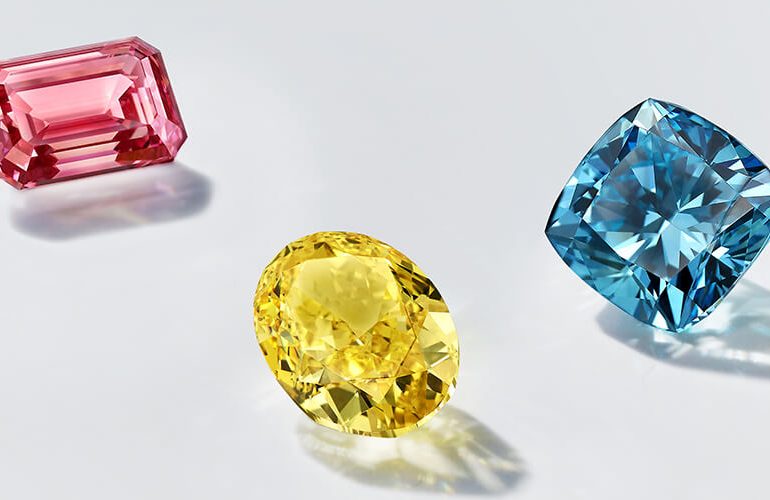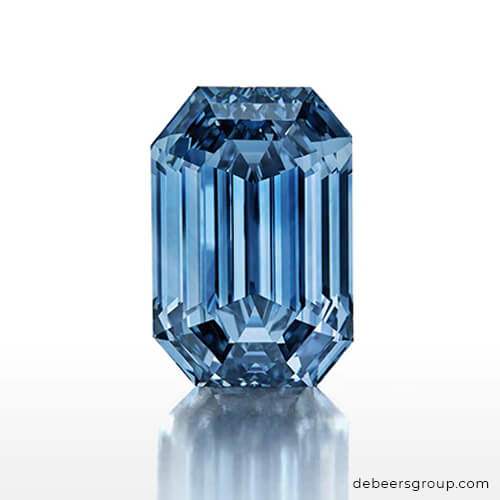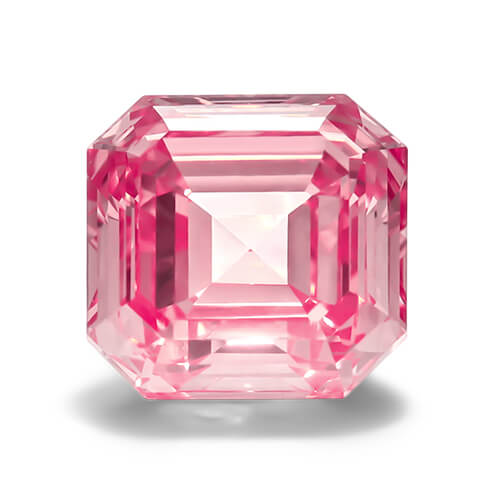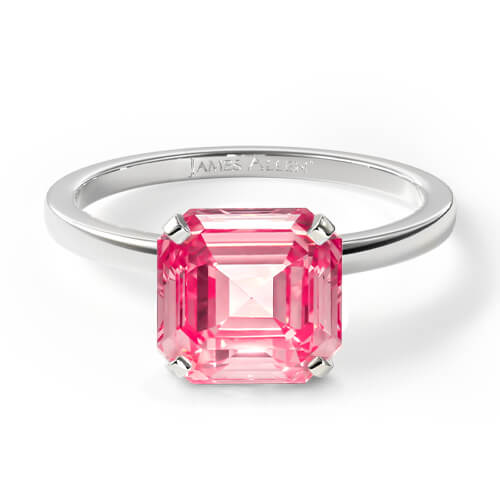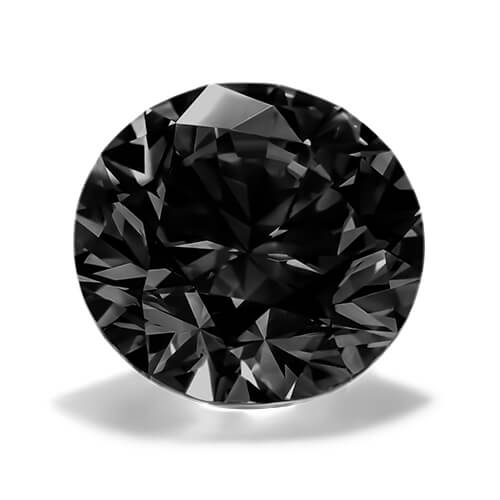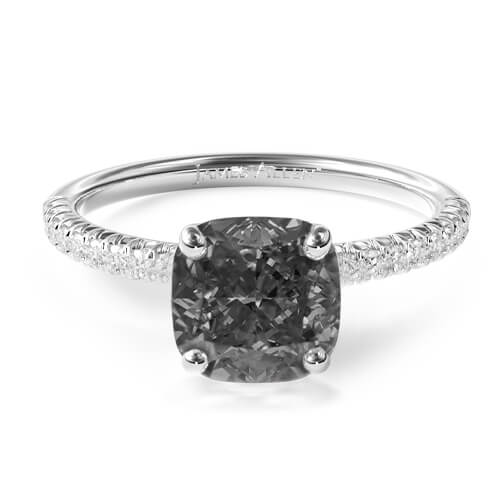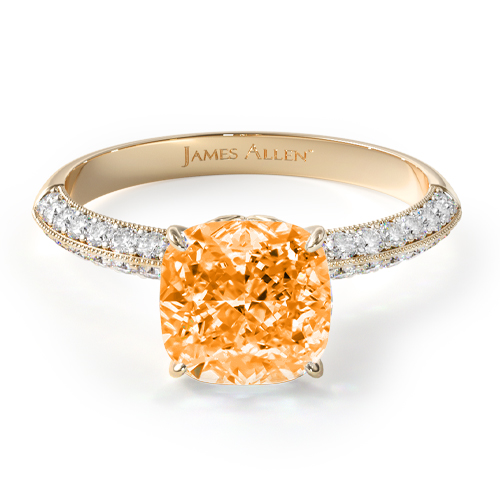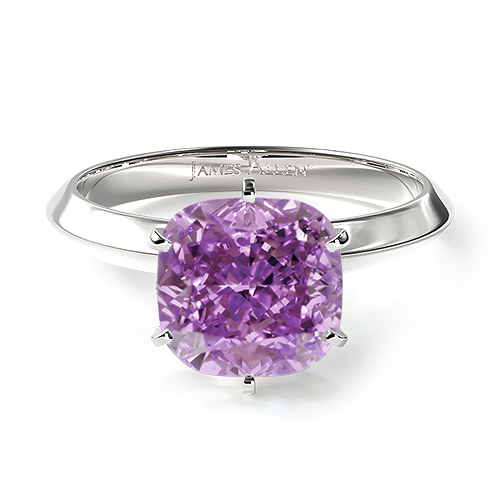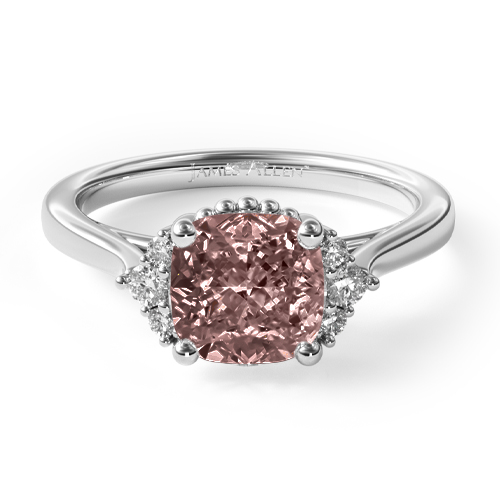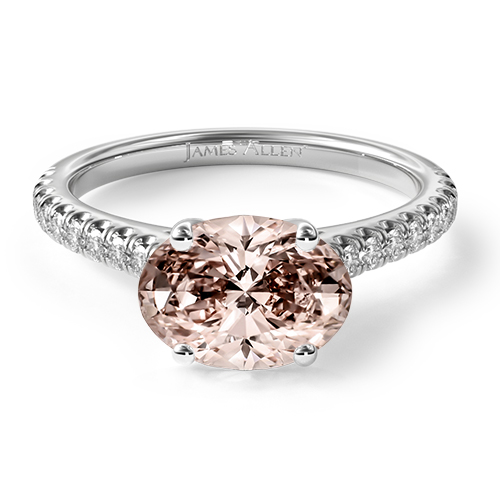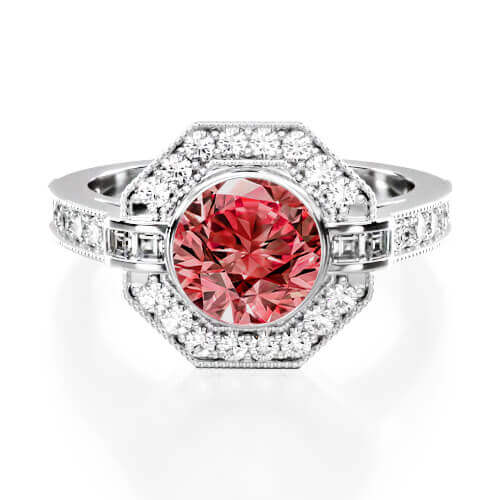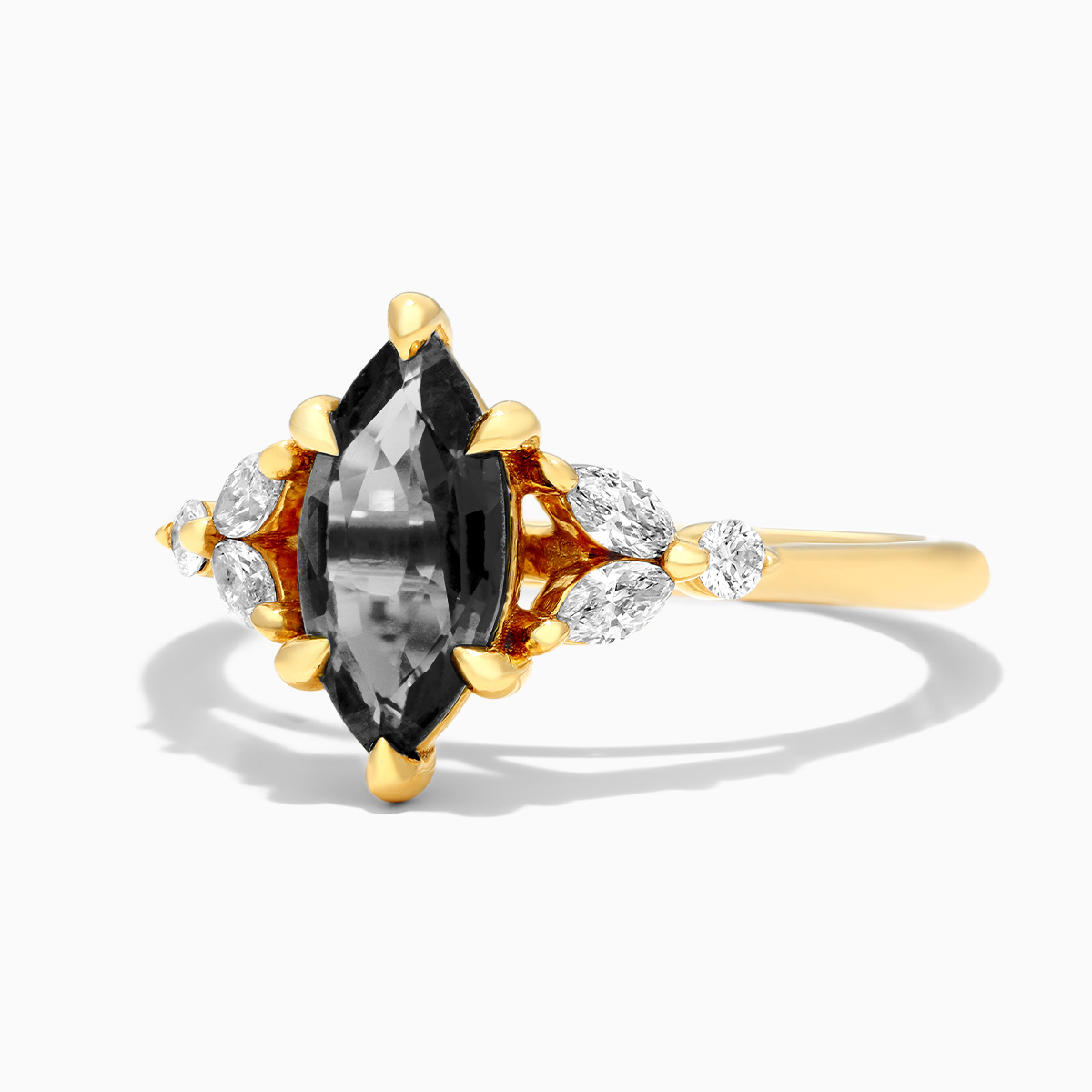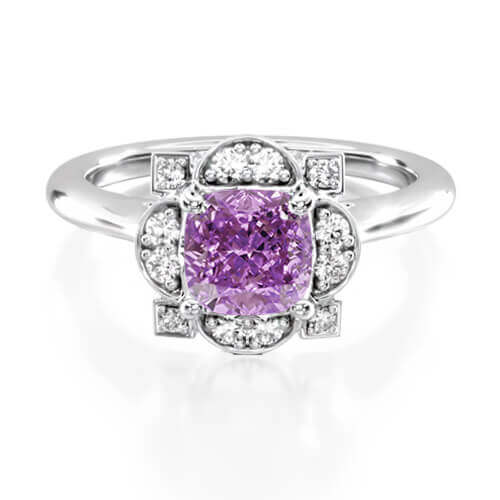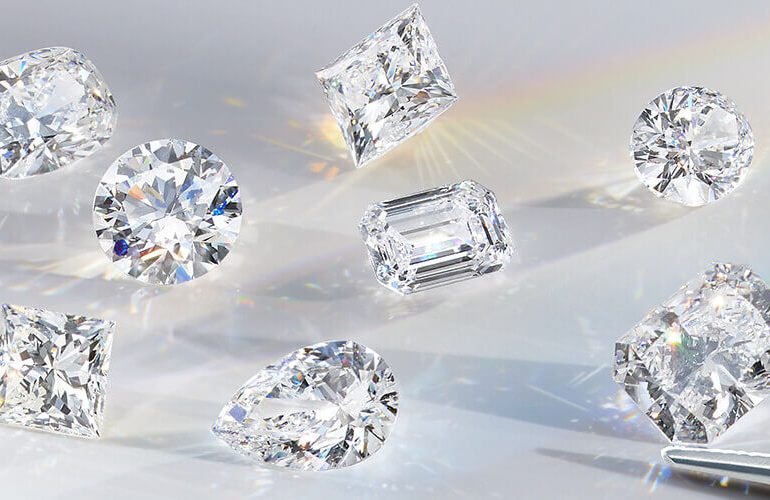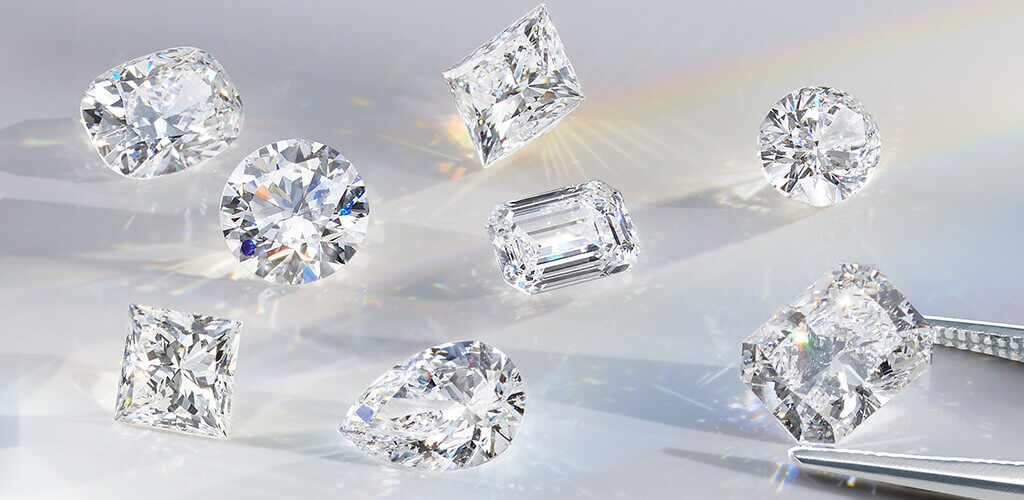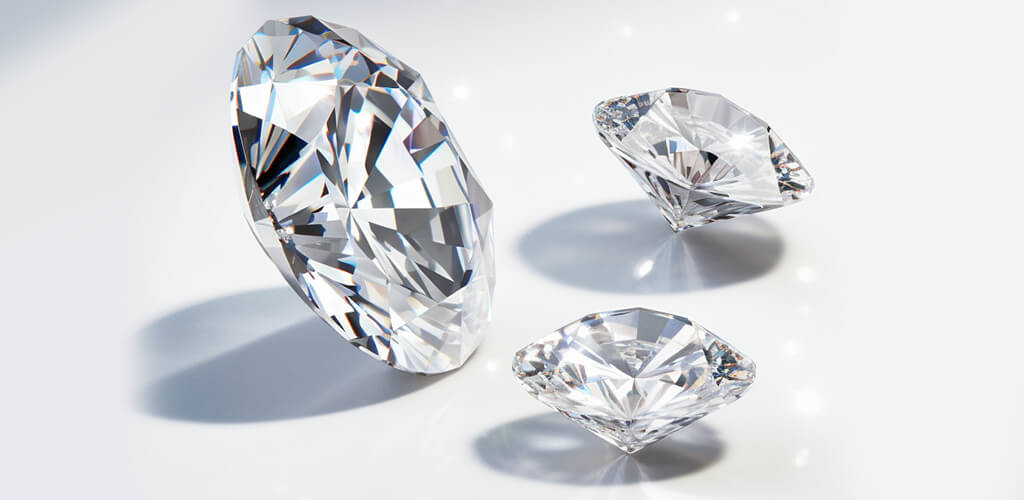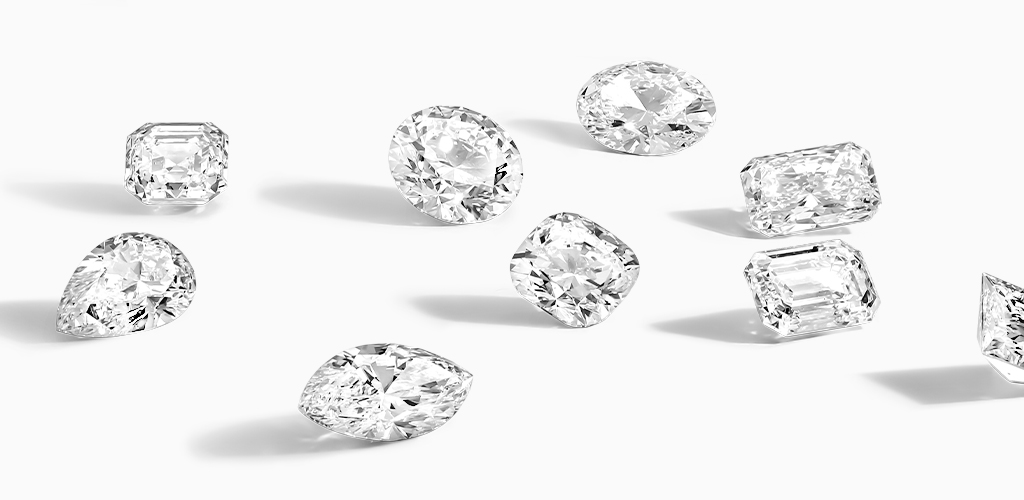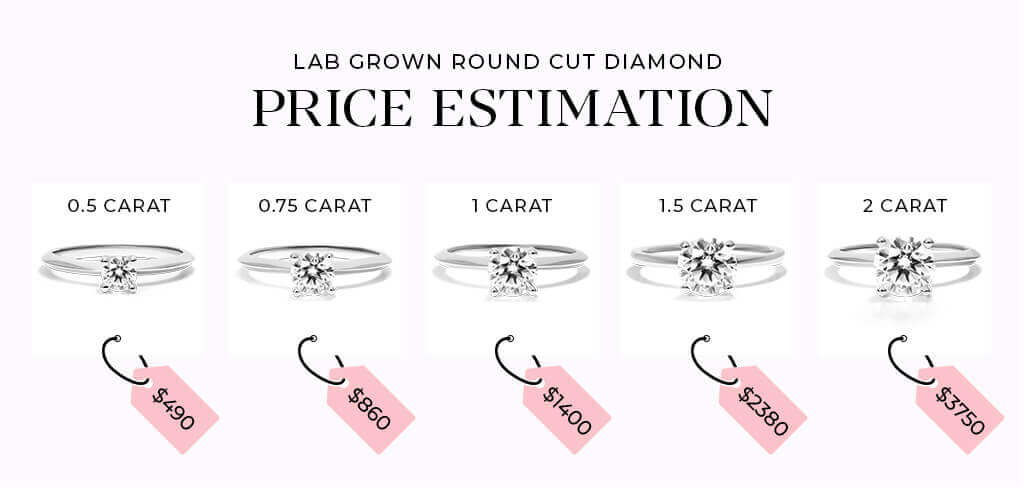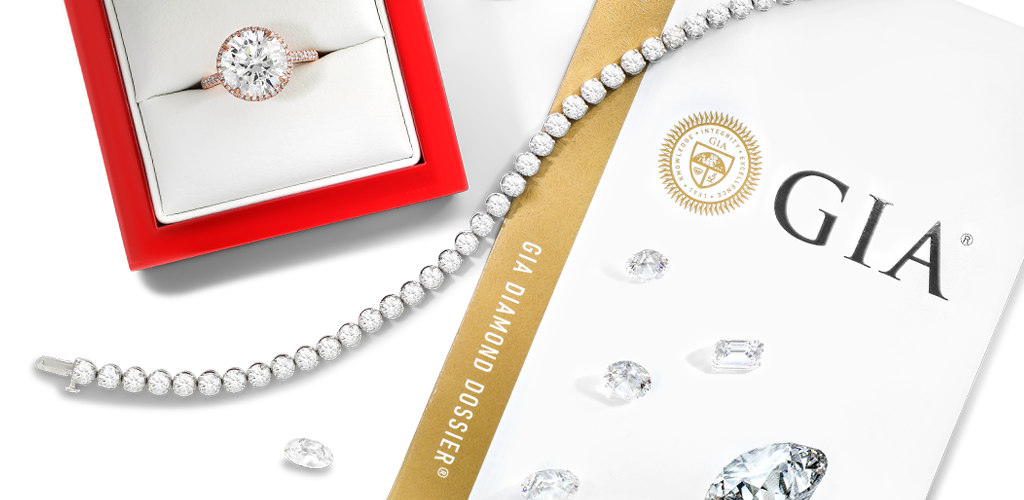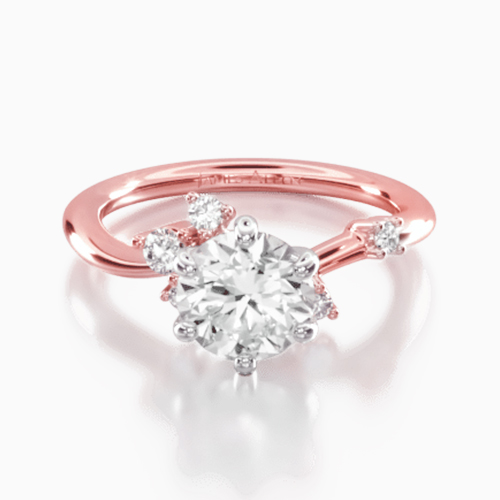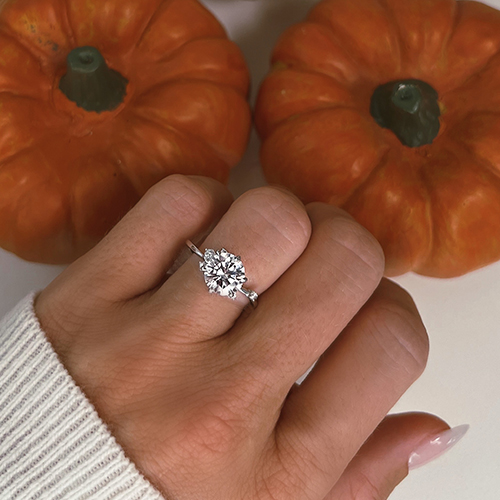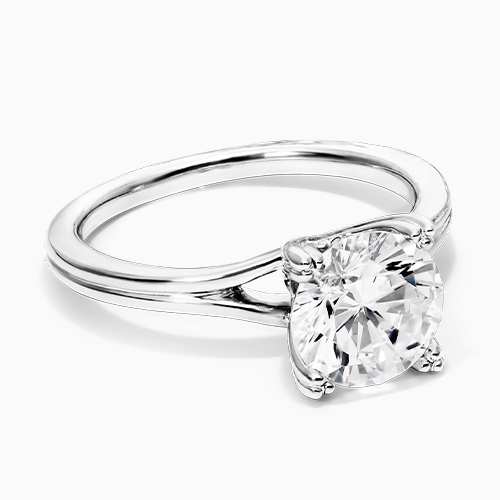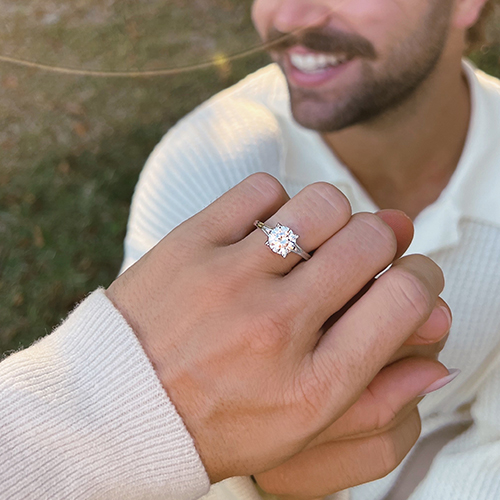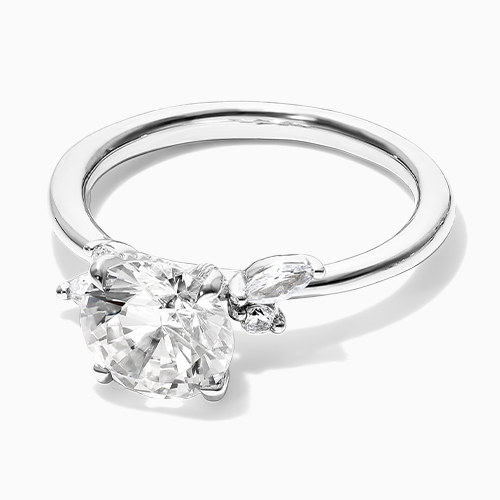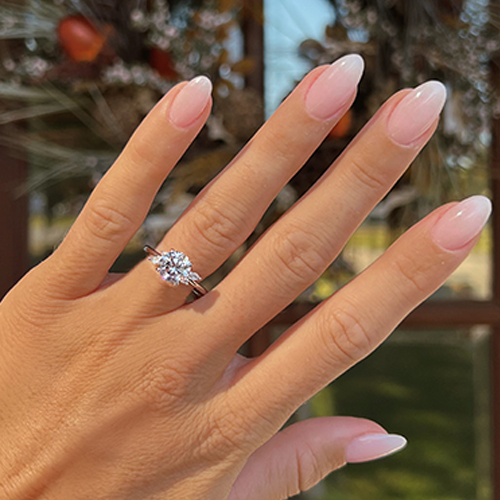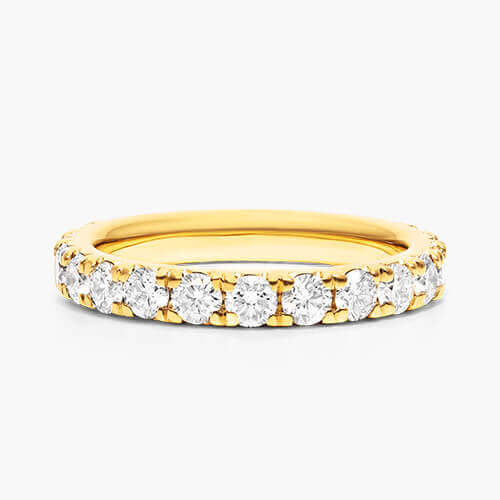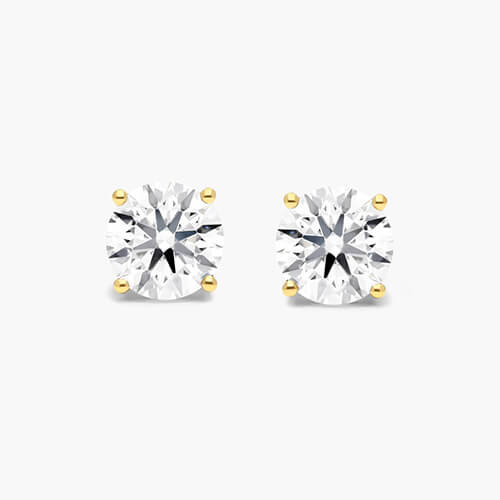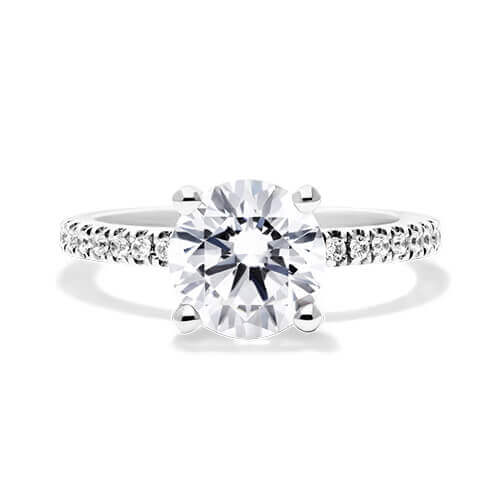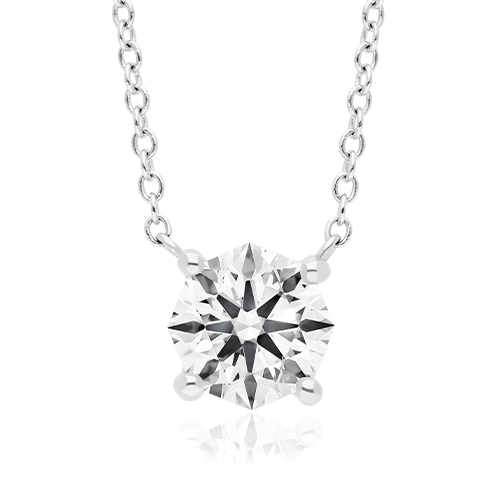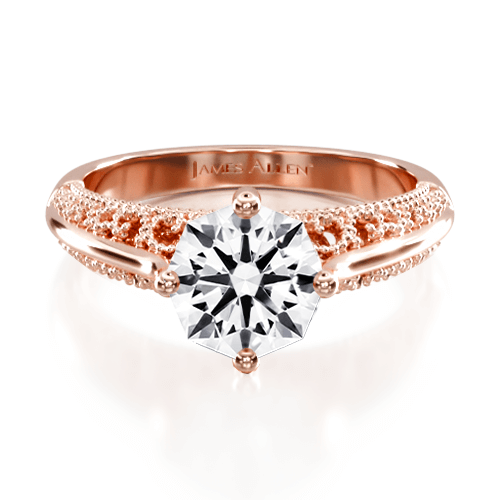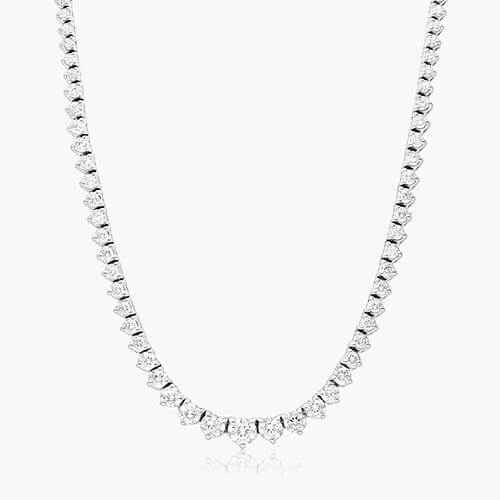Fancy colored diamonds are all the rage, but what exactly are they? Are they real? Are they like regular diamonds? And how do they get their color? Read on to get all the answers!
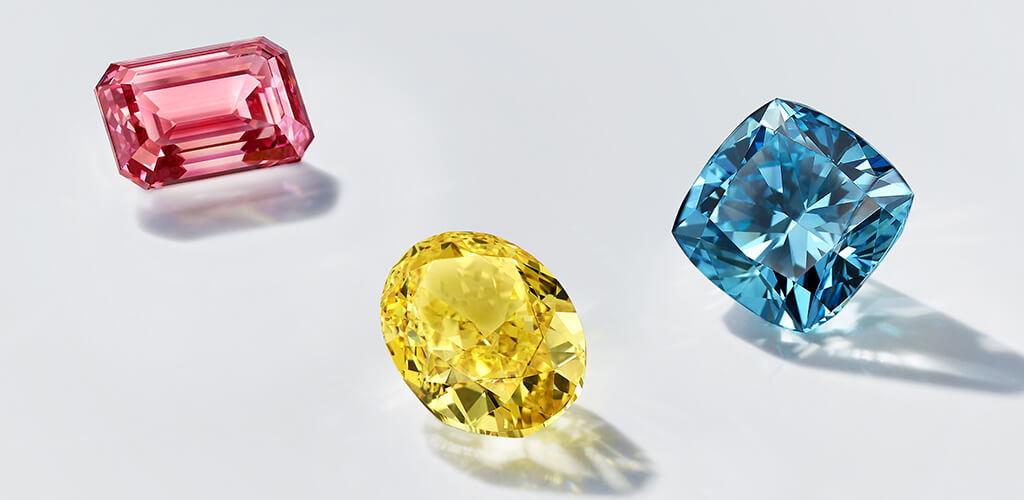
In 2021, a new record was set. The largest, most valuable blue diamond was discovered in South Africa. It was larger, had a deeper color than the previous record holder, and was awarded the highest color rating available by the GIA, a prize offered to less than 1% of blue diamonds.
The stone took over a year to polish and facet into the 15.10-carat step-cut diamond it is today. Now The De Beers Cullinan Blue diamond is valued at $48 million USD.
While THIS fancy colored diamond is out of reach for most of us here on the ground, getting your own fancy colored diamond is easier than ever. James Allen carries a variety of sizes and colors to choose from.
So get on board with the trend that is here to stay! From engagement rings to fine jewelry, fancy colored diamonds give that unique, personal edge to your bling. So get ready to sparkle, because embracing color has never been more in style.
What Exactly Are Fancy Colored Diamonds?
Essentially fancy colored diamonds are diamonds that feature a variety of colors. Diamonds normally come in an assortment of colorless options. Meaning that diamonds are either completely colorless all the way to a variety of light yellow.
How Do Fancy Color Diamonds Get Their Color?
While in traditional diamonds color is not desired, in fancy colored diamonds, color is EXACTLY what you want! From dark to light, color is what you are after. So how do they get their color?
These highly prized diamonds, similar to their traditional counterparts, get their color when they are formed. Intense heat and pressure during the diamond’s formation create trace elements that present themselves in a way to create either no color, or for fancy colored diamonds, brilliant color.
The strength of the color depends on the interaction of the trace elements. Whether you prefer a lighter pink or a brighter blue, it’s all about the carbon atoms.
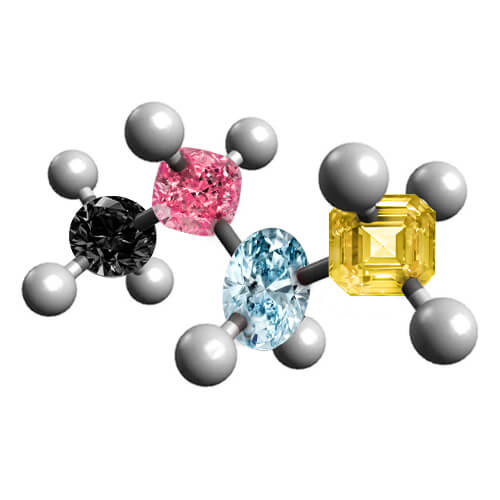
The Colors Of The Rainbow
Fancy colored diamonds are available in every color you can think of: pink, blue, purple, green, orange, brown, black, and even red or gray. While traditional diamonds lose value as they gain color, fancy colored diamonds do the opposite.
The stronger the color, the higher the value. Similar to traditional diamonds, fancy colored diamonds gain value the larger the size. The most common colors are in the yellow family, which is great because they are often the most economical choice of fancy colored diamonds.
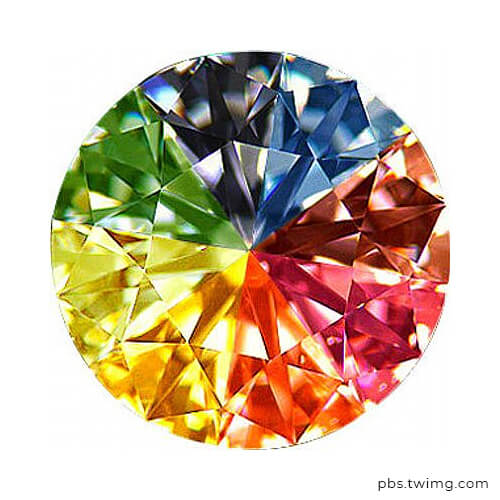
Hue, Saturation, and Tone
Hue, saturation, and tone: what are they and what do they mean? Hue is the main or strongest color of the fancy colored diamond. Fancy colored diamonds can be one color but the hue is the strongest, followed by secondary colors and tints.
Saturation is just how strong the color, or hue, of the fancy colored diamond is. As in, how saturated is the color of the fancy colored diamond. A fancy colored diamond’s saturation can go from “light” to “intense,” all the way to “vivid.”
And finally there is tone. Tone is how light or dark the fancy colored diamond appears and is decided by the amount of brown, black, gray, or white color.
Hue, saturation, and tone all come together to determine a fancy colored diamond’s grade (light, fancy, fancy light, fancy intense, vivid, fancy dark, and fancy deep). Similar to their traditional diamond counterparts, fancy colored diamonds’ value and fit are not determined solely on their grade.
Different strokes for different folks, different grades for different fancy colored diamonds, for different engagement rings.
Engaging Color, Exclusive Style
Fancy colored diamonds are just as real as traditional diamonds and can be used in just as many ways. Fancy colored diamonds are a popular choice, especially for engagement rings and wedding rings. So how do you know which fancy colored diamond is right for you?
Fancy Pink Diamonds
Let’s start with fancy pink diamonds. Fancy pink diamonds have long been a favorite for those who love a burst of color. As part of the rarest of diamond colors, earth created pink (and red) fancy colored diamonds are an extraordinary find, with reports of only approximately 30 being in existence.
Get your very own fancy pink diamond engagement ring with James Allen!
Fancy Blue Diamonds
Love of color is not specific to pink. Fancy blue diamonds make a beautiful, calming choice. Another rarity, fancy blue colored diamonds are thought to represent spirituality, eternity, truth, and devotion. Getting their hue from boron, with their resemblance of a clear spring sky or a sparkling ocean, it is no wonder fancy blue diamonds are so popular.
Check out this example of a Fancy Blue Diamond Engagement Ring!
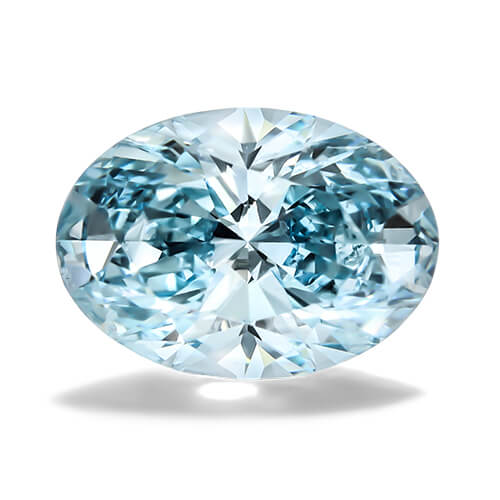
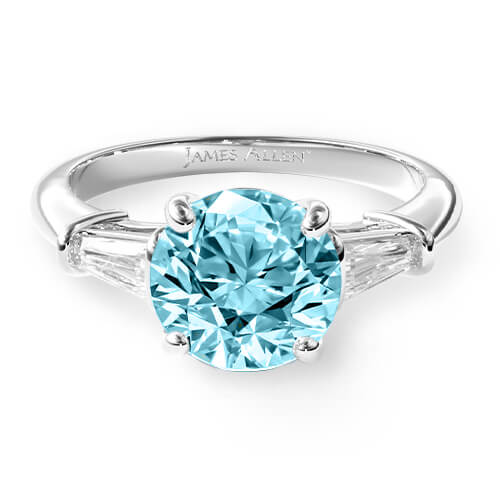
Fancy Black Diamonds
Or maybe you wanna go dark like the black diamond ring? Fancy black diamonds have a strong color intensity and sparkle with a metallic shine. These exotic diamonds are a darling of the fashion world.
Found only in a few locations, fancy black diamonds are thought to symbolize love and eternity, making them a fabulously unique way to adorn your finger. Get your own version from James Allen and start showing off!
Fancy Green Diamonds
Representing life, renewal, and growth, green is a great color for a fancy diamond. Fancy green diamonds are extremely rare, as they are created due to exposure to radiation. The radiation can come from groundwater or radioactive rocks near the earth’s surface.
Often pricier than their counterparts due to their rarity, green diamonds are a lively colorful choice for an engagement ring. And don’t worry, while the stone may get its color from radiation, it is totally safe!
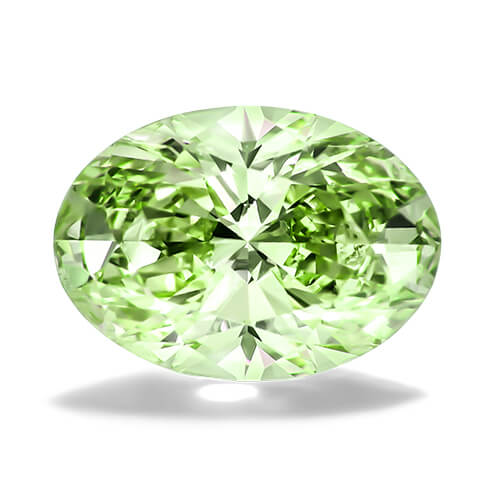
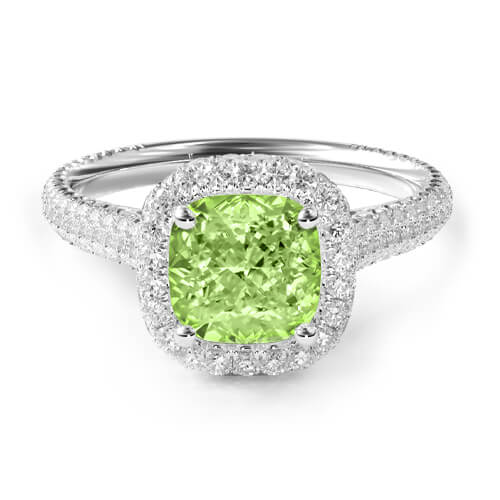
Looking for another color of the rainbow to make your engagement ring stand out? Check out the many colors of fancy diamonds that James Allen has to offer!
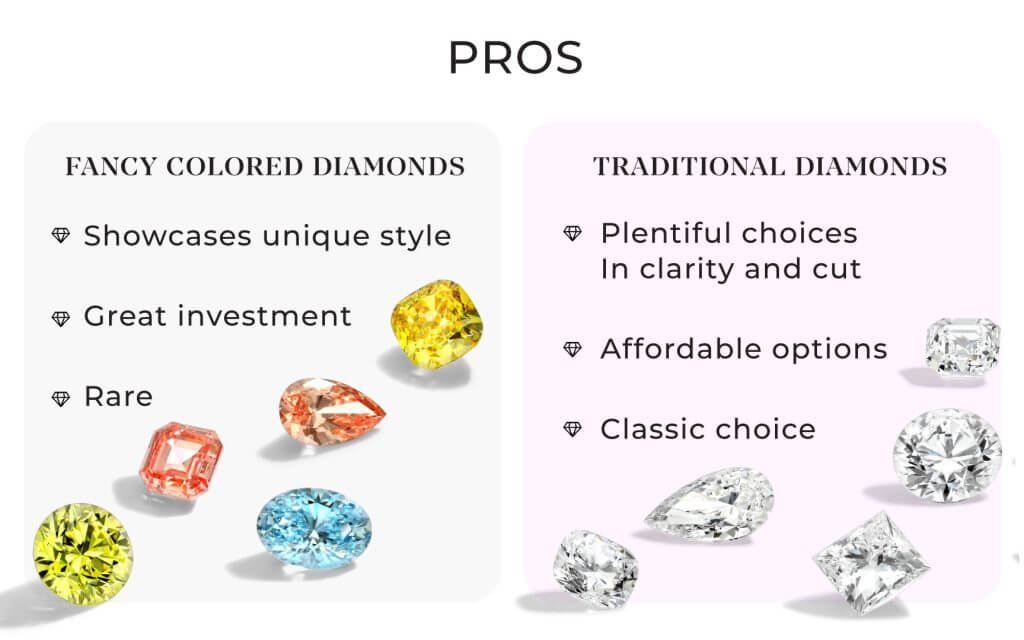
Real Diamonds, Real Fancy
Colored diamonds are not to be confused with gemstones (which also go great with diamonds). Fancy colored diamonds are just as much diamonds as their traditional counterparts.
The advantage is that you can express your personal style in a particularly unique way using color. Check out these examples below or create your own!
And let’s not forget fancy colored brown diamonds, better known as chocolate diamonds.
In addition to their rarity and value, fancy colored diamonds are extremely popular. At once elegant and trendy, fancy colored diamonds allow you to add an extra level of personal expression. But don’t be fooled by the name, fancy colored diamonds are also good to wear every day!
Pair with white gold, yellow gold, or platinum, James Allen has a variety of fancy colored diamonds to create the perfect engagement ring. Start shopping today!
FAQs:
1. How are Colored diamonds graded?
Fancy colored diamonds are graded using the GIA’s color grading system, which assesses the diamond’s hue, tone, and saturation. The more intense the color, the higher the rating, and the higher the price.
2. Are fancy colored diamonds a good investment?
If you know what to look for and you purchase a diamond with a proper GIA rating- then, yes! Colored diamonds make a great investment. While the colored diamond market can be volatile at times, there is comfort in knowing that fancy colored diamonds are rare, coveted, and stunningly beautiful- forever!
3. How rare are fancy colored diamonds?
While the rarity of a colored diamond depends on the intensity of its color, the short answer is yes! Fancy colored diamonds are incredibly rare and highly coveted. For example, less than 0.1% of diamonds mined are fancy yellow diamonds!
Check out our other helpful blogs:
- How to Buy an Engagement Ring
- Virtual Engagement Ring Try-On
- 2022 Top Engagement Ring TrendsGuide
- Ring Anatomy 101

